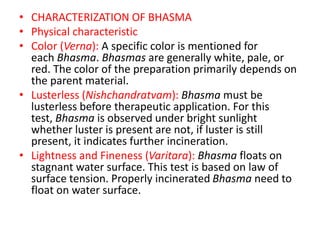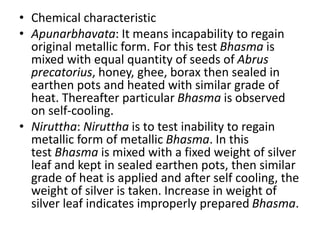This document discusses Ayurvedic formulations including arishtas, asavas, avalehas, ghritas, churnas, tailas, gutikas, and bhasmas. It provides details on the ingredients, processes, and examples of each type of formulation. The key steps involve purification of ingredients, followed by mixing with liquids or oils and processing through fermentation or heating to extract medicinal properties in a stable, non-toxic form.
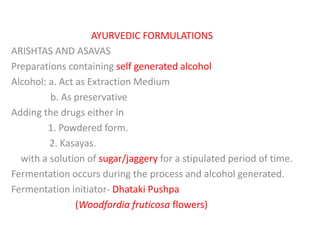
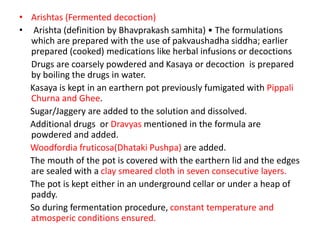






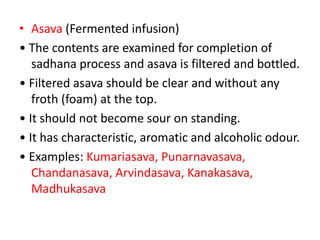
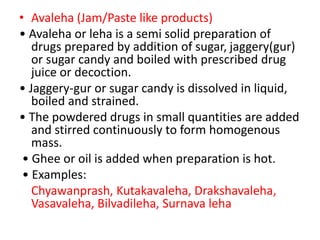
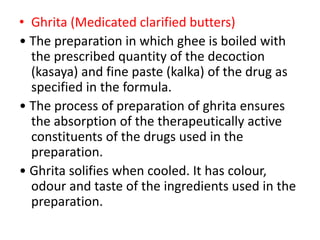
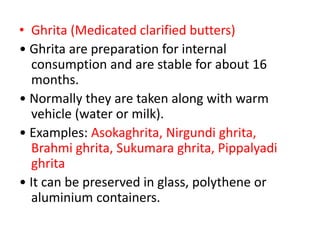






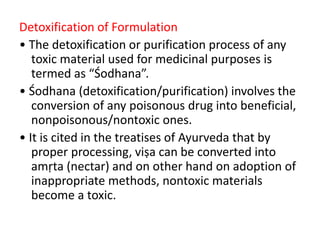






![• The general preparation of Swarna Bhasma involves
the three processes of shodhana, dravana,
and marana.
• The leaves of gold are heated over fire and dipped in
sesa (Sesamum indicum) oil when its red hot, process is
continued seven times separately. The soft leaves are
processed with buttermilk/cow's urine and the
decoction of kulattha (Dolichous biflorus), kanji (sour
gruel processed from rice [Oryza sativa]), and radish
(Raphanus sativus). Finally the leaves are dried by heat.
• The mixture is triturated and the paste thus obtained is
dried under sunlight. The process of triturating and
drying under sunlight is repeated 7 to 14 times using
fresh aliquots of latex, and the final product is
obtained.](https://image.slidesharecdn.com/ayurvedicformulations-230914031857-113a7b9e/85/Ayurvedic-formulations-pptx-26-320.jpg)




